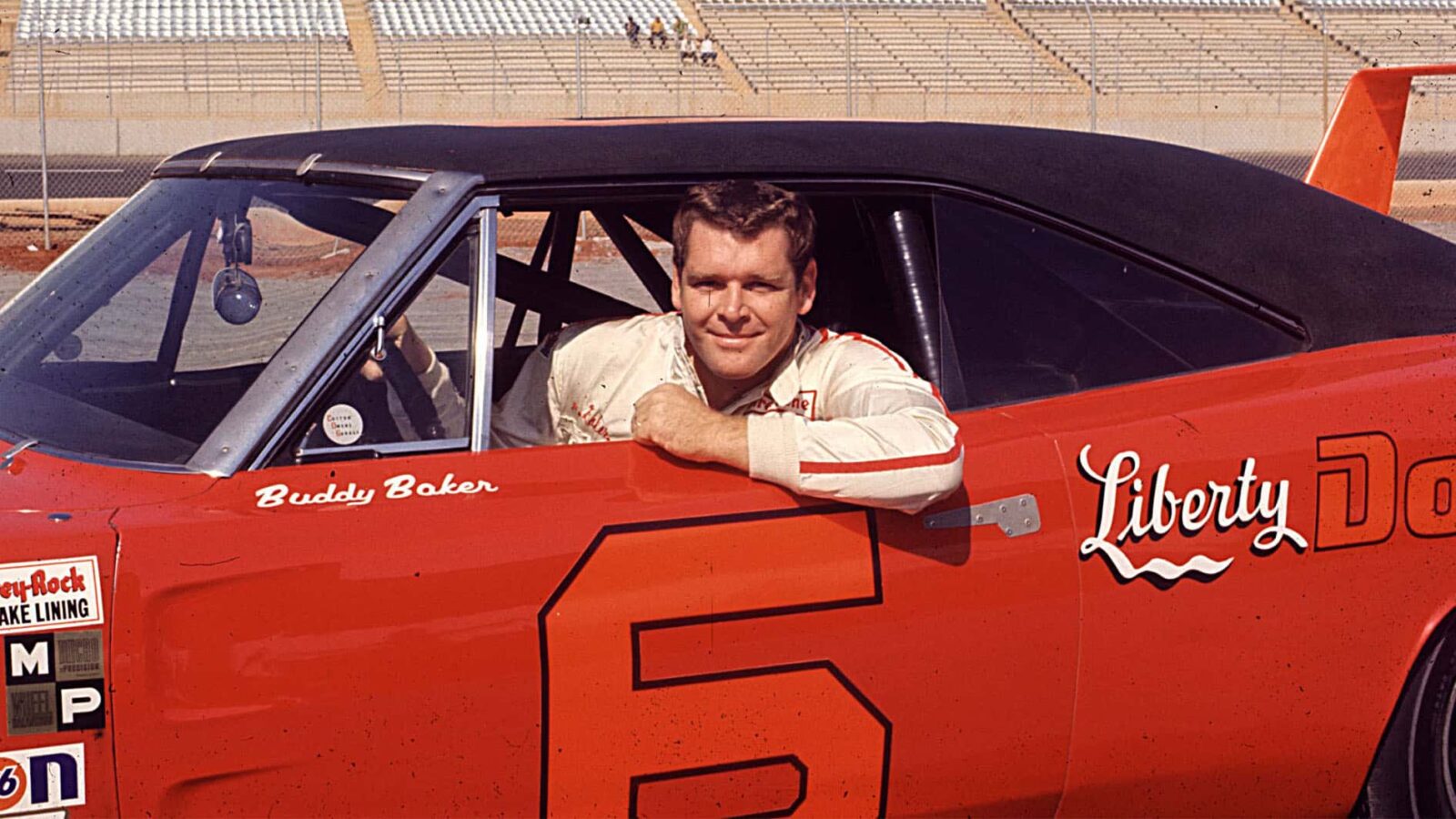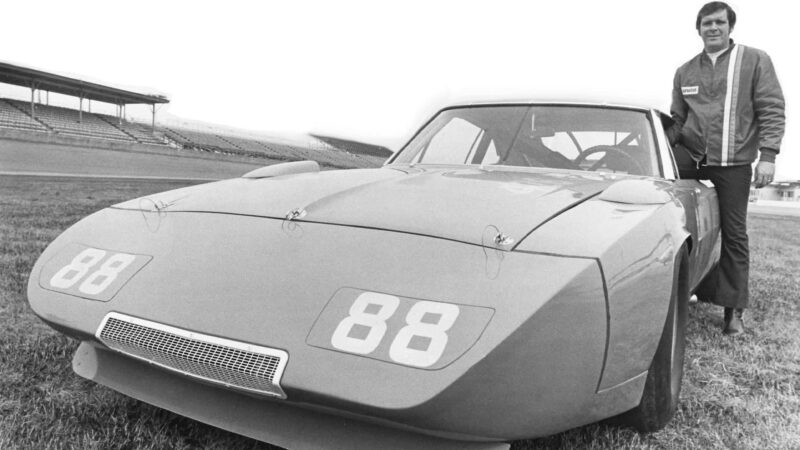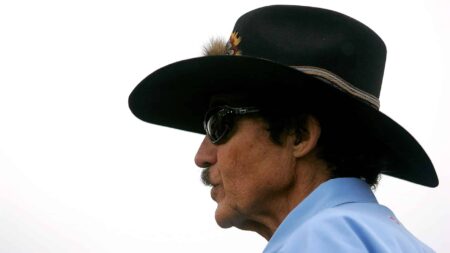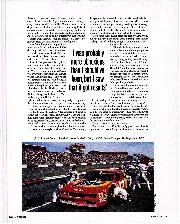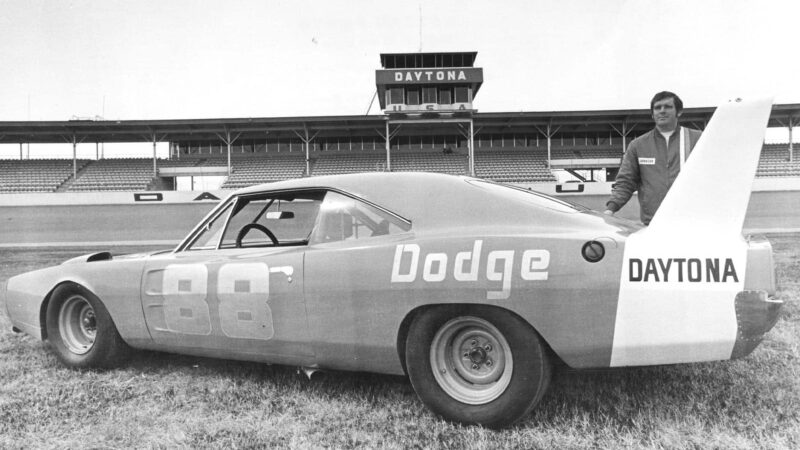During the 1960s, stock cars had gone a long way toward escaping their small-town, small-time roots thanks to increasingly powerful engines that caused qualifying speeds at Daytona to skyrocket from a mere 143mph in 1959 to a whopping 181mph in 1967. But it wasn’t until the end of the decade that builders began to master the black art of aerodynamics.
In 1969, tired of being outrun by Ford and Mercury, Chrysler engineers went to work on the bodywork of the Dodge Charger. They streamlined the nose with a pointy beak, then generated much-needed downforce with an ultra-high, way-cool spoiler. Next to the competition, the Daytona Charger 500 looked like a UFO.
Chrysler was so eager to flaunt its new baby, the company race-prepped a test mule and entered it using NASCAR car owner Ray Nichels as a beard in the inaugural Talladega 500. Charlie Glotzbach qualified Chrysler Engineering’s #88 Charger at 199.446mph. But drivers were spooked by the awesome speeds being turned on the high-banked oval. Most boycotted the event, and the #88 car never got to race.
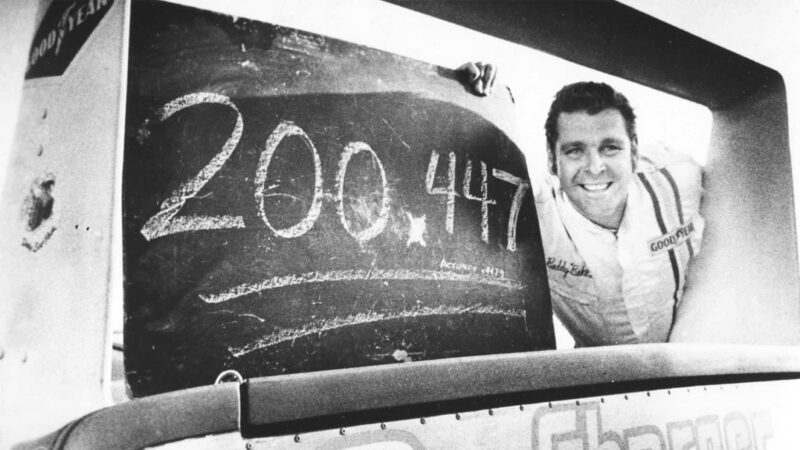
7-litre 420bhp Dodge, took Baker to 200.447mph
Getty Images
“Early the next year,” recalls Larry Rathgeb, who headed Chrysler’s motor sport engineering staff, “I got a call from Frank Wylie at Dodge PR. He wanted to know if we could go 200mph at Talladega, and I said, ‘Of course we can.’”
On March 24, 1970, Rathgeb and his team went with Baker son of two-time Grand National Champion Buck Baker and the #88 Charger to Talladega, where a NASCAR timing crew was waiting. Thunderstorms kept the team from running in the morning. When the rain stopped, Baker fired up the 7-litre 420bhp Dodge hemi and took to the track. His early laps weren’t encouraging. “Buddy didn’t think we could break 200,” Rathgeb says. “To keep him occupied, we gave him a roll of tape, and he taped up every opening on that car.”
